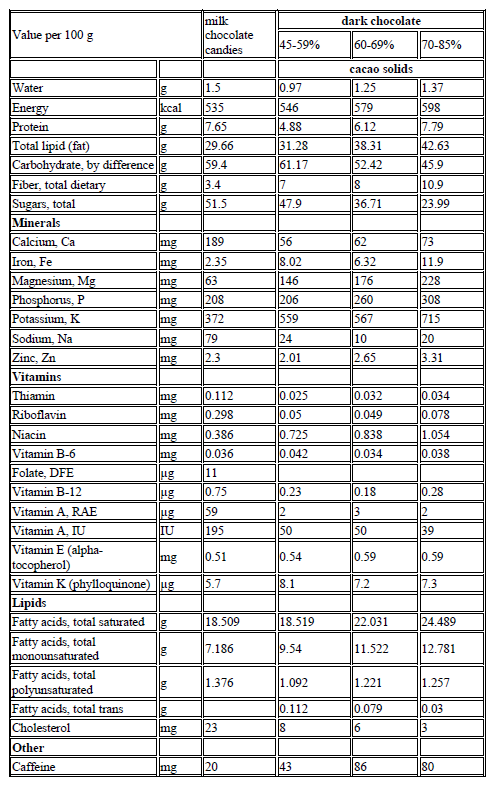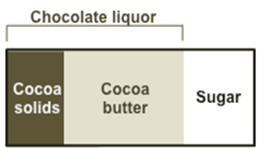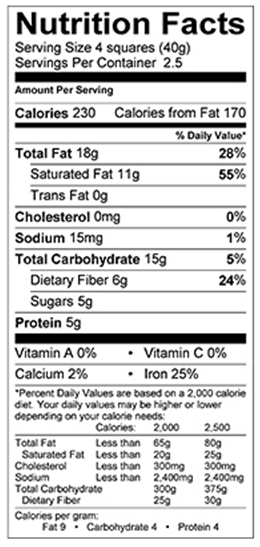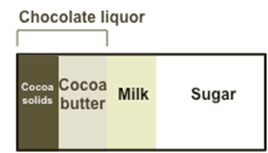For centuries chocolate has been considered a luxury. Eaten first by kings and emperors, slowly entered the market and reached less noble customers. Eventually, it became a mass product present everywhere – even in space.
Short history of chocolate
Chocolate has been known for at least 3000 years, first in the region of Mesoamerica, which stretches between central Mexico and Belize, Guatemala, El Salvador, Honduras, Nicaragua, and northern Costa Rica. The Incas considered it the drink of gods. That could have given the name to the cocoa tree, Theobroma cacao, from Greek words “the drink of god”. The first evidence of chocolate beverage dates back to 1900 BC. Lots of archeological evidence (bowls for example) proves that chocolate was a highly appreciated potion. It was drunk by Aztecs, Mayans, and Incas. It was called chocolate by Aztecs and was believed to build up resistance and fight fatigue.
Cocoa came to Europe in the 16th century. At the Spanish court, where it was introduced first, it was served with added sugar or honey to counteract the natural bitter taste. From Spain, it conquered other courts. Subsequently, cocoa plantations spread throughout English, Dutch and French colonies.
Chocolate production
Cocoa trees grow in the wet lowlands tropics of Central and South America, West Africa, and South-East Asia. Cocoa is harvested manually. Cocoa seed pods are collected and placed in piles for fermentation. Next, they are dried, scooped, and shipped to the manufacturer for further processing.
Following steps include roasting, removing the outer shell of the bean, breaking the inner cocoa bean into small pieces (cocoa nibs). Cocoa nibs are then ground into cocoa liquor, which is also known as unsweetened chocolate or cocoa mass. The liquor is further processed into two components: cocoa solids and cocoa butter.
Chocolate liquor is blended with the additional cocoa butter in different quantities in order to produce different kinds of chocolate such as:
• white chocolate (the lowest quantity of chocolate liquor) – also contains sugar, cocoa butter, milk/milk powder, and vanilla;
• milk chocolate (low quantity of cocoa liquor) – also contains sugar, cocoa butter, cocoa liquor, milk or milk powder, and vanilla;
• plain dark chocolate (the high quantity of chocolate liquor) – also contains cocoa liquor, cocoa butter, sugar, and vanilla.
An emulsifying agent (lecithin) is usually added in order to help mix the ingredients and keep them together.
Nutrition facts
The table below shows nutrition values for four types of chocolate – milk and dark of various content of cocoa solids. The interesting fact is that while they all have similar calorific value the sugar content differs a lot.
Chocolate is an excellent source of vitamins such as riboflavin and vitamin B12 as well as minerals. Milk chocolate is a great source of calcium.

| Value per 100 g | unit | milk chocolate candies | dark chocolate 45-59% cacao solids | dark chocolate 60-69% cacao solids | dark chocolate 70-85% cacao solids |
|---|---|---|---|---|---|
| Water | g | 1.5 | 0.97 | 1.25 | 1.37 |
| Energy | kcal | 535 | 546 | 579 | 598 |
| Protein | g | 7.65 | 4.88 | 6.12 | 7.79 |
| Total lipid (fat) | g | 29.66 | 31.28 | 38.31 | 42.63 |
| Carbohydrate (by difference) | g | 59.4 | 61.17 | 52.42 | 45.90 |
| Total dietary fiber | g | 3.4 | 7 | 8 | 10.9 |
| Total sugars | g | 51.5 | 47.9 | 36.71 | 23.99 |
| Minerals | |||||
| Calcium (Ca) | mg | 189 | 56 | 62 | 73 |
| Iron (Fe) | mg | 2.35 | 8.02 | 6.32 | 11.90 |
| Magnesium (Mg) | mg | 63 | 146 | 176 | 228 |
| Phosphorus (P) | mg | 208 | 206 | 260 | 308 |
| Potassium (K) | mg | 372 | 559 | 567 | 715 |
| Sodium (Na) | mg | 79 | 24 | 10 | 20 |
| Zinc (Zn) | mg | 2.3 | 2.01 | 2.65 | 3.31 |
| Vitamins | |||||
| Thiamin | mg | 0.112 | 0.025 | 0.032 | 0.034 |
| Riboflavin | mg | 0.298 | 0.050 | 0.049 | 0.078 |
| Niacin | mg | ||||
Apart from minerals and vitamins, chocolate is rich in antioxidants such as flavanols, flavanoids and phenolic phytochemicals credited with many health benefits. However, those compounds are largely found in cocoa solids (also known as cocoa powder). Therefore, the darker the chocolate is, the healthier it is.
Dark chocolate also contains theobromine, which hardens tooth enamel. It is also a stimulant but not as strong as caffeine.
Benefits of eating chocolate
Since the most important nutrients such as antioxidants are found in cocoa solids, it’s clear that the higher the cocoa content in chocolate, the more nutrients we will eat. Serious benefits, therefore, occur from eating dark chocolate. The truth is that the darker, the better.
Research shows that eating flavanol-rich dark chocolate can decrease blood pressure, insulin resistance, and serum LDL cholesterol. By improving insulin sensitivity flavanols can even reduce memory loss.
Flavonoids are also considered anti-inflammatory, anti-allergic, anti-microbial, antibacterial, and antiviral.
How to choose good chocolate?
Real cocoa content…
As mentioned earlier, the darker the better. The most beneficial of eating chocolate are credited with cocoa solids. Cocoa solids’ content should be stated on the packaging both in the name e.g. “70% dark chocolate” and also in the ingredients list.
However, the content shown in percentage (70% dark chocolate or 70% Cocoa) refers to both cocoa solids and cocoa butter. Depending on the ratio of those two, a 70% chocolate may have more or fewer cocoa solids and therefore more or less of the beneficial compounds such as for example antioxidants. The pictures below show the schematic of two similar chocolates with the same percentage e.g. 70.
How to choose good chocolate?
Real cocoa content
As mentioned earlier, the darker the better. The most benefits of eating chocolate are credited with cocoa solids. Cocoa solids’ content should be stated on the packaging both in the name e.g. “70% dark chocolate” and also in the ingredients list.
However, the content shown in percentage (70% dark chocolate or 70% Cocoa) refers to both cocoa solids and cocoa butter. Depending on the ratio of those two, a 70% chocolate may have more or less cocoa solids and therefore more or less of the beneficial compounds such as for example antioxidants. The pictures below show the schematic of two similar chocolates with the same percentage e.g. 70.

Chocolate with more cocoa solids and rich in antioxidants

Chocolate with less cocoa solids and moderate in antioxidants
Chocolate with less cocoa solids and moderate in antioxidants
There is a simple way to verify the cocoa solids content.
- the percentage shown on dark chocolate refers to all ingredients derived from cocoa bean by weight; these are chocolate liquor and cocoa butter;
- in the nutrition information or table there fat content should be stated; it has to be divided by the serving size to get the percentage of fat in chocolate;
- then the ratio number must be multiplied by 100 to get the percentage of the fat content. By subtracting the fat content from the cocoa percentage you will get the percentage of cocoa solids.
Look at the example below. It’s a label of 85% cocoa dark chocolate.

The serving size is 40g
The content of total fat is 18g
The fat percentage can be calculated by dividing the fat content by serving size.
Here it will be:
18g/40g = 0.45
0.45*100 = 45%
It means that in 85% of cocoa there is 45% of cocoa butter and 40% of cocoa solids – the source rich in antioxidants and minerals.
The above calculation is useful for both bakers who need to know fat content when they bake and for those who want to benefit the most from chocolate.
Real fat content
Edible chocolate is prepared from chocolate liquor and cocoa butter. However, some brands will offer fats instead of cocoa butter such as palm or coconut oil. Even though cocoa butter consists mainly of saturated fats it has neutral effect on cholesterol level.
Milk chocolate
Milk chocolate, even though beeing delicious, it has much lower content of antioxidants and other nutrients, as the percentage of cocoa solids is relatively low. This is well illustrated by the picture below.

According to USFDA regulation, the product has to contain a minimum of 10% cocoa solids to be called “milk chocolate”. Many bars from brand-names contain less than 2% of cocoa solids! If the ingredients list starts with sugar, which is a major component, it should not be considered chocolate.
There is one more disadvantage of eating milk chocolate products – milk binds with antioxidants and makes them unavailable for the body. A recent study suggested that milk proteins reduced the antioxidant activity of milk chocolate, compared with dark chocolate.
Organic chocolate
If possible, try to buy organic products. They use the cacao, which was grown without the use of pesticides.
It has been reported that depending on harvesting and processing procedures, as much as 90% of the flavonoids can be lost in the processing. The storage and handling procedures may also influence the content of healthy compounds in chocolate such as flavanols. Good quality dark chocolate where the producer pays special attention to the quality of the processing will almost definitely have higher content of antioxidants. Choosing a company with organic and quality certificate is most likely a good idea.
What if the percentage of cocoa solids is not mentioned on the packaging?
There are some chocolate brands that will not state the cocoa percentage on the packaging. They may, however follow the US Food and Drug Administration (FDA) rules on the ranges of cocoa percentages:
• “unsweetened”, “brute”, or “bitter” chocolate will have between 85% and 99% cocoa;
• “bittersweet” chocolate will have between 35% and 84%, which is quite a large range;
• “semisweet” or “sweet” chocolate can have between 15% and 34%.
In Europe, the regulation states that chocolate must contain at least 43% cocoa to be considered “dark”.
Sources:
https://www.ahajournals.org/doi/full/10.1161/01.hyp.0000174990.46027.70
http://circ.ahajournals.org/content/119/10/1433.full
https://pubs.acs.org/doi/pdf/10.1021/jf060290o
http://ajcn.nutrition.org/content/81/1/298S.full
Serafini M, Bugianesi R, Maiani G, Valtuena S, De Santis S, Crozier A. Plasma antioxidants from chocolate. Nature 2003; 424:1013.
Hannum SM, Erdman JW. Emerging health benefits from cocoa and chocolate. J Med Food 2000; 3:73–5.
PorterLJ, Ma Z, Chan B. Cacao procyanidins: major flavonoids and identification of some minor metabolites. Phytochemistry 1991; 30:1657– 63.
